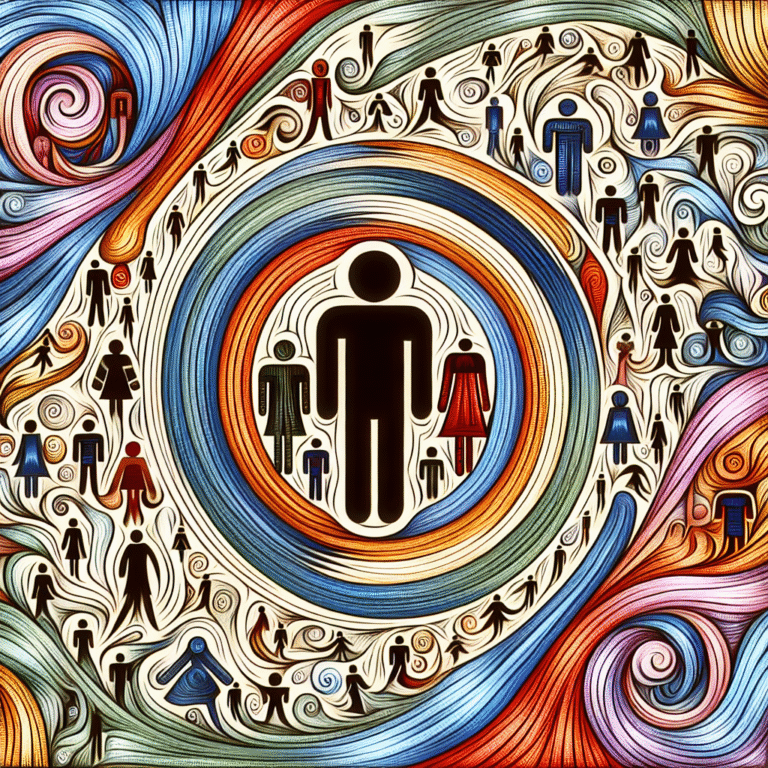
Introduction
In a world seemingly polarized by division and misunderstanding, the power of empathy emerges as a beacon of hope. Imagine walking in another person’s shoes, feeling their heartache, joy, or confusion—it’s not just a lofty ideal but a vital skill that can transform relationships and communities. Unlocking empathy is about recognizing shared humanity, and when cultivated, it leads to deeper connections, fostering compassion in our daily lives. This article offers practical strategies for cultivating compassion in everyday moments, allowing us to enrich both our lives and the lives of those around us.
Understanding Empathy and Its Importance
Before diving into the strategies, let’s first define empathy. Empathy is the ability to understand and share the feelings of another. It consists of two primary components: cognitive empathy (the capacity to understand another’s perspective) and emotional empathy (the ability to physically feel what someone else is feeling). Unlocking empathy isn’t merely a nice-to-have; it’s essential for fostering healthy relationships, enhancing communication, and promoting cooperation.
The Impact of Empathy on Personal and Social Health
Research has shown that empathetic individuals tend to have healthier friendships, stronger familial bonds, and enriched workplace relationships. According to a report from the Harvard Business Review, teams that prioritize empathy perform better, as members feel more valued and connected. Therefore, cultivating empathy not only advances personal satisfaction but also contributes positively to social cohesion.
Case Study: The Power of Empathy in Healthcare
A striking example of empathy’s impact can be found in healthcare settings. A study conducted at the University of Michigan showed that doctors who practice empathetic communication with patients result in better health outcomes, reduced anxiety, and enhanced patient satisfaction.
Analysis: This case study illustrates how empathy directly influences wellness and emotional strength, showcasing the real-world applications of unlocking empathy in both personal and professional contexts.
Practical Strategies for Unlocking Empathy
1. Active Listening: The First Step to Empathy
Understanding Active Listening
Active listening involves fully concentrating, understanding, responding, and remembering what is being said. This approach allows individuals to feel heard, creating a foundation for empathy.
Techniques to Practice Active Listening:
- Maintain eye contact: This shows the speaker that you are engaged.
- Ask clarifying questions: This encourages the speaker to express themselves more fully.
- Reflect back what you hear: This confirms that you understand their message.
2. Mindfulness: Cultivating Inner Awareness
Practicing mindfulness improves emotional awareness and can enhance one’s ability to empathize. Being present helps in recognizing one’s own emotions, which can spill over into understanding others’.
Mindfulness Techniques:
- Meditation: Spend a few minutes each day in quiet reflection.
- Breathing exercises: Focus on breathing to ground yourself and center your emotions.
- Journaling: Write down your feelings and thoughts to observe patterns and triggers.
3. Sharing Stories: The Art of Connection
Storytelling is a powerful method for unlocking empathy. When we share stories—whether personal or cultural—we connect through shared experiences.
How to Implement Storytelling:
- Initiate discussions with friends about personal experiences.
- Join communities or platforms that encourage storytelling (like local storytelling events or podcasts).
4. Volunteer Work: Putting Empathy into Action
Volunteering exposes you to different experiences and perspectives, broadening your understanding of others’ lives.
Ways to Volunteer:
- Join local outreach programs.
- Contribute to non-profit organizations.
- Mentor someone in need.
Table: Benefits of Volunteering for Empathy
| Benefit | Description |
|---|---|
| Enhanced Perspective | Improves understanding of diverse life situations |
| Personal Growth | Fosters self-reflection and compassion |
| Community Bonding | Strengthens ties within communities |
5. Empathy in Digital Communication
In today’s digital age, understanding how to communicate with empathy online becomes crucial. Digital exchanges often lack the nuances of face-to-face interactions, so applying empathy here requires thoughtful approaches.
Strategies for Digital Empathy:
- Use positive language: Instead of criticism, opt for constructive feedback.
- Take time before responding to emotionally charged messages: This minimizes misunderstandings.
Case Study: Empathy in Crisis Communication
During the COVID-19 pandemic, many organizations shifted their communication strategies to include empathy. Businesses that demonstrated care and understanding for employees’ and customers’ situations retained loyalty and trust during turbulent times.
Analysis: This study illustrates the significance of empathetic communication during crises, reinforcing the concept that unlocking empathy plays a crucial role in both leadership and personal interactions.
Building a Culture of Empathy in the Workplace
1. Training Programs Focused on Empathy
Organizations can implement training programs aimed at enhancing employees’ empathetic skills. Workshops on active listening, conflict resolution, and fostering understanding can empower individuals to communicate better.
2. Recognizing Empathetic Behaviors: Encouragement and Rewards
Recognizing and rewarding employees who exhibit empathetic behaviors reinforces the importance of empathy in the workplace.
3. Creating Supportive Work Environments
Workplaces that promote a culture of compassion lead to higher job satisfaction. Open-door policies, mental health days, and community-building exercises can foster a culturally empathetic workplace.
Conclusion
Unlocking empathy is not simply an admirable goal; it’s an essential skill that can enrich lives and strengthen communities. The strategies outlined in this article provide a robust framework for cultivating compassion in daily life. By actively listening, practicing mindfulness, sharing stories, engaging in volunteer work, and applying empathy in digital communication, we can harness the power of connection and understanding.
As we conclude, remember that every small act of empathy contributes to a larger wave of compassion. Embrace these strategies and watch them transform your interactions, enabling you to lead a more connected and fulfilling life. Start today—because every step toward empathy is a step toward a more compassionate world.
FAQs
1. What is the difference between empathy and sympathy?
Empathy involves understanding and sharing the feelings of another, while sympathy refers to feelings of pity or sorrow for someone else’s misfortune.
2. Can empathy be cultivated in children?
Yes, children can be taught empathy through models of behavior, direct conversations about feelings, and encouraging them to see different perspectives.
3. How does empathy impact mental health?
Research suggests that practicing empathy can reduce feelings of isolation and increase emotional resilience, leading to improved mental health.
4. Are there any books on empathy that you recommend?
Recommended Reading:
- "Emotional Intelligence: Why It Can Matter More Than IQ" by Daniel Goleman
- "The Art of Empathy: A Training Manual for Grown-ups" by Karla McLaren
5. How can organizations measure empathy?
Organizations can measure empathy through employee feedback surveys, tracking retention rates, and assessing team productivity and collaboration metrics.
By embracing these insights and practical strategies for unlocking empathy and cultivating compassion in daily life, you can become a catalyst for positive change both personally and socially. Start your journey today!















